Burgsvik is a small village located far south on the island of Gotland. It is positioned just outside the east coast of Sweden on the Baltic sea. During summer Burgsvik is crowded with tourists and in the winter one gets the feeling that it´s almost deserted. It´s a place where many Swedish media gurus and celebrities spend their summer holidays and the location for one of Sweden’s most popular reality television shows, ”So much better”. A show where well-known artists interpret each other’s songs within the beautiful natural surrounds and architecture that the southern parts of Gotland are known for.
This is also the home of Sanny Laurin, a man who turned his back on steady jobs and crowded cities to fully concentrate on his art and to fulfill a dream: to renovate the family property and transform it into a sanctuary. This is where he created the perfect surroundings for his creativity, business and daily life. His world revolves around the house where he lives, the studio where he creates, and the old barn that he turned into a gallery for himself and other artists. In the summer he is the type of person who integrates well in the streams of tourists, acting as host and exhibiting local artist. In the winter his life is quite the opposite. This is a period of self-imposed solitude, a time to work, rest and reflect.




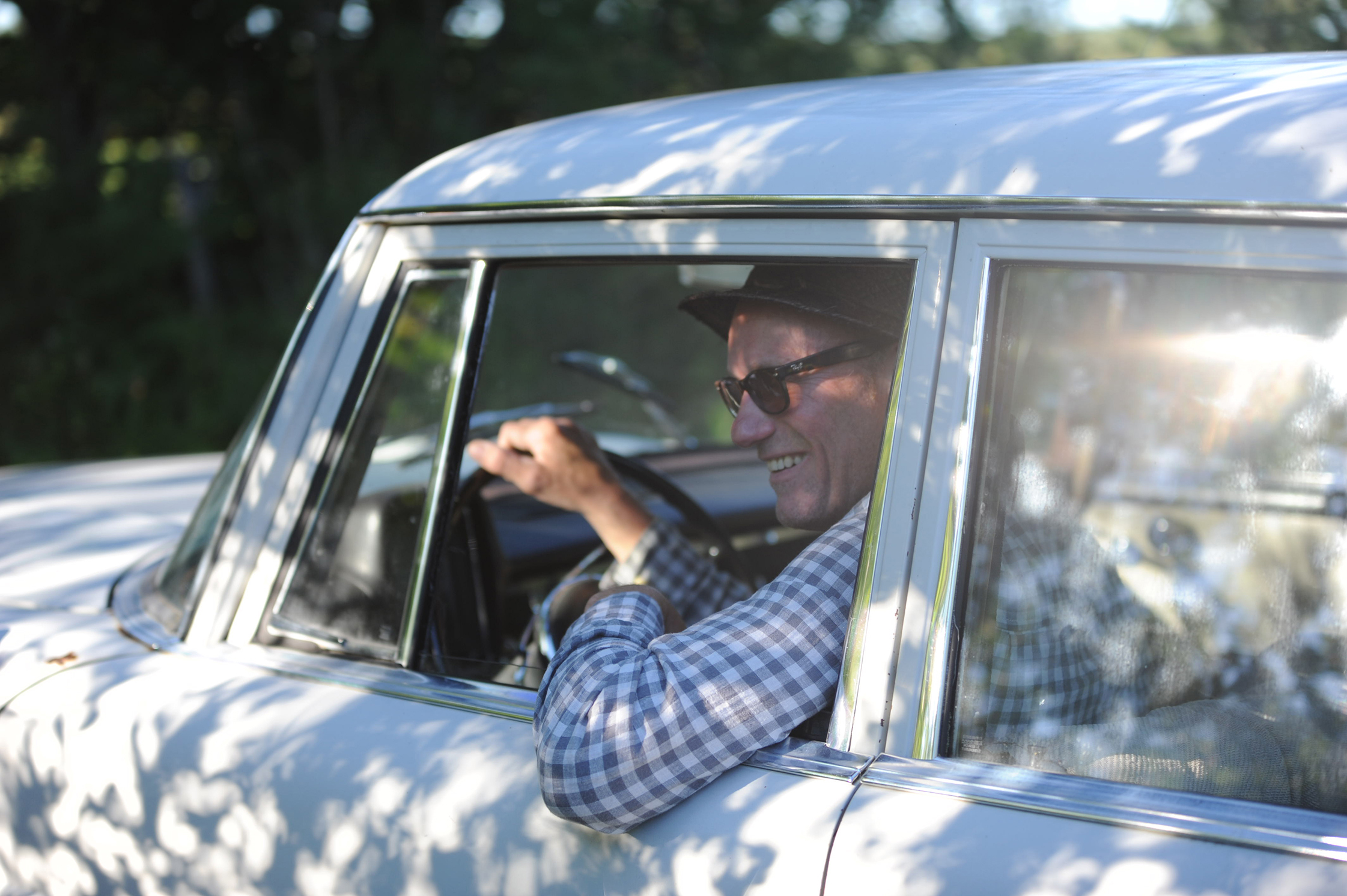

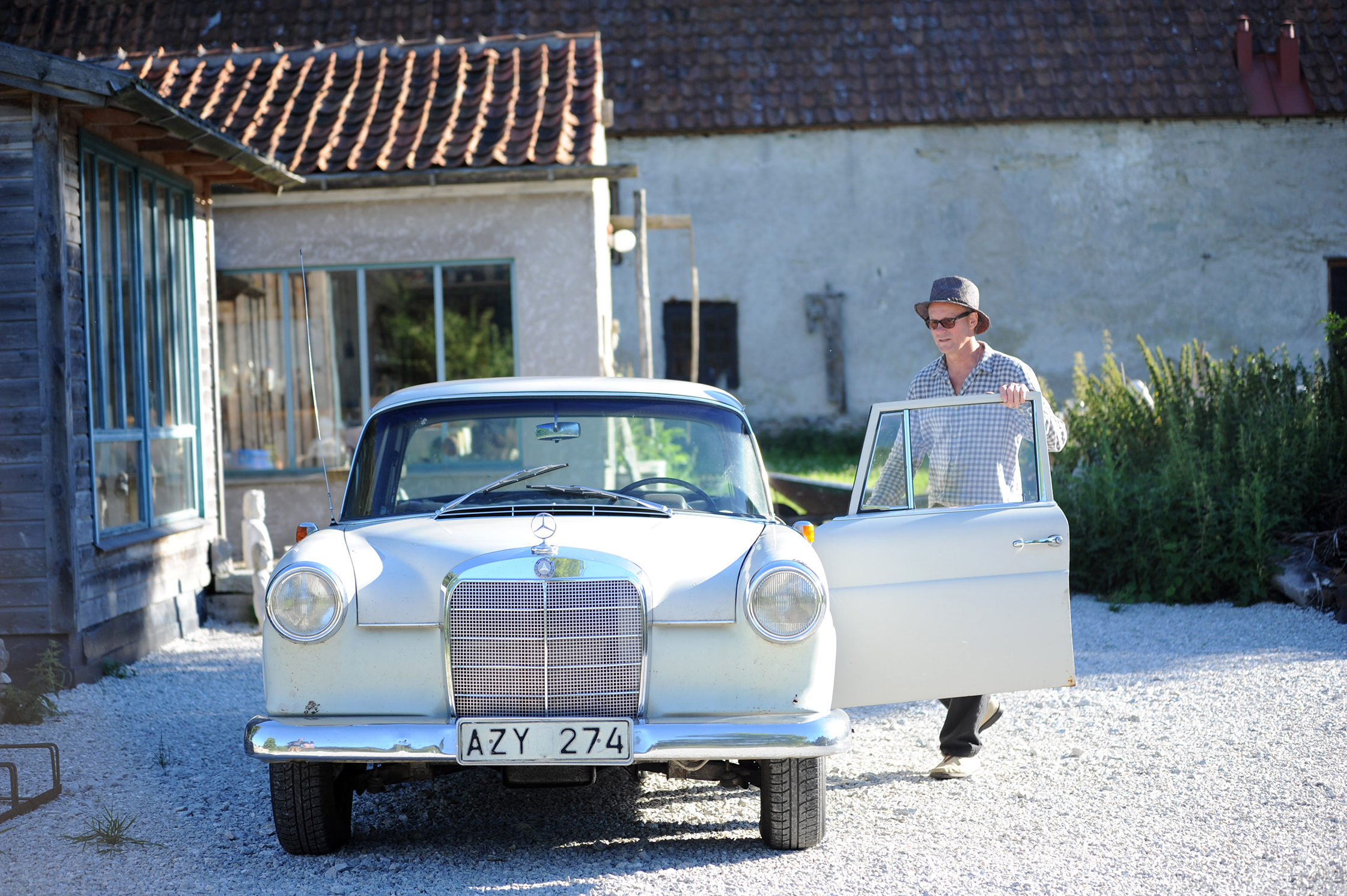












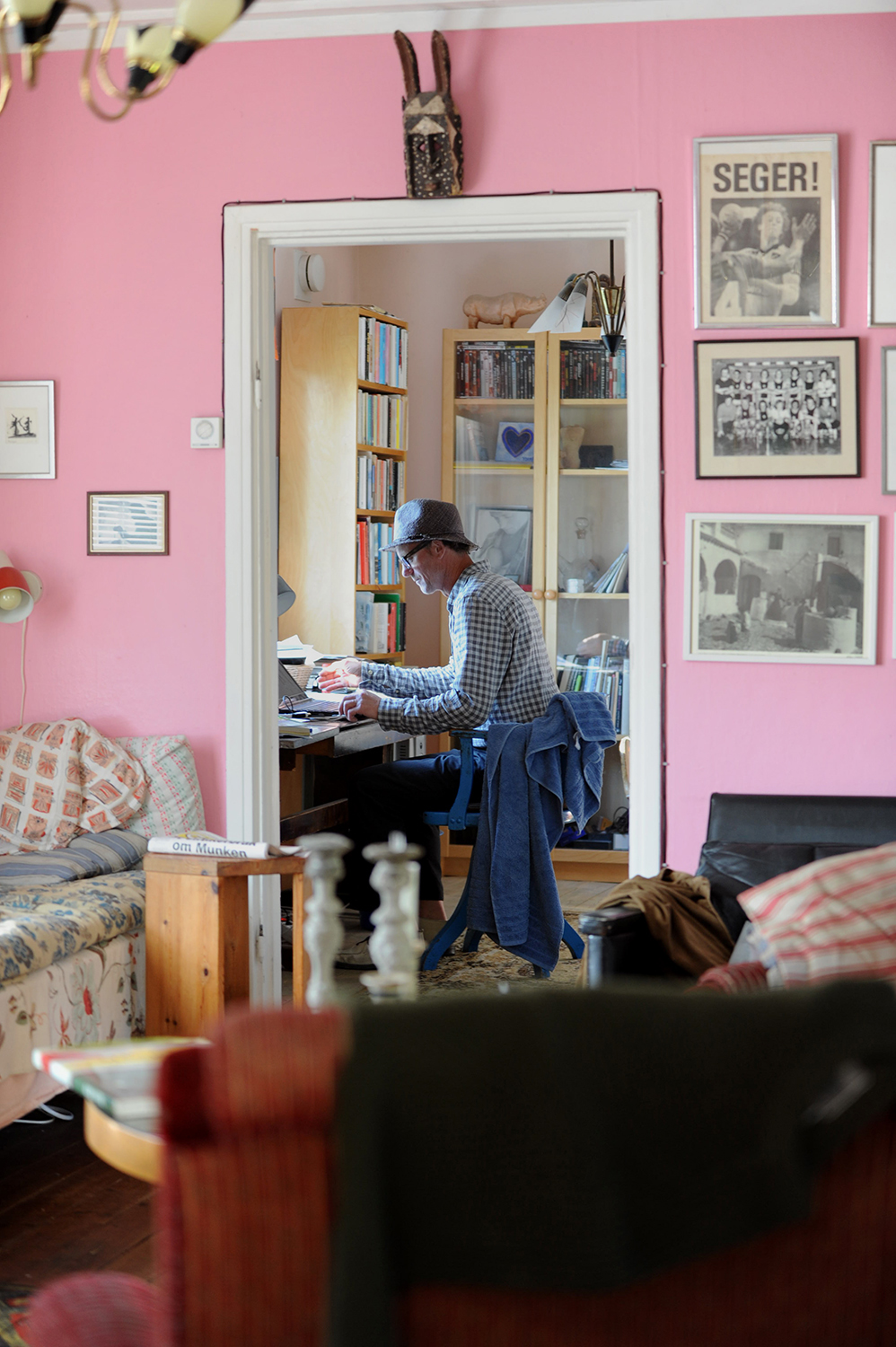













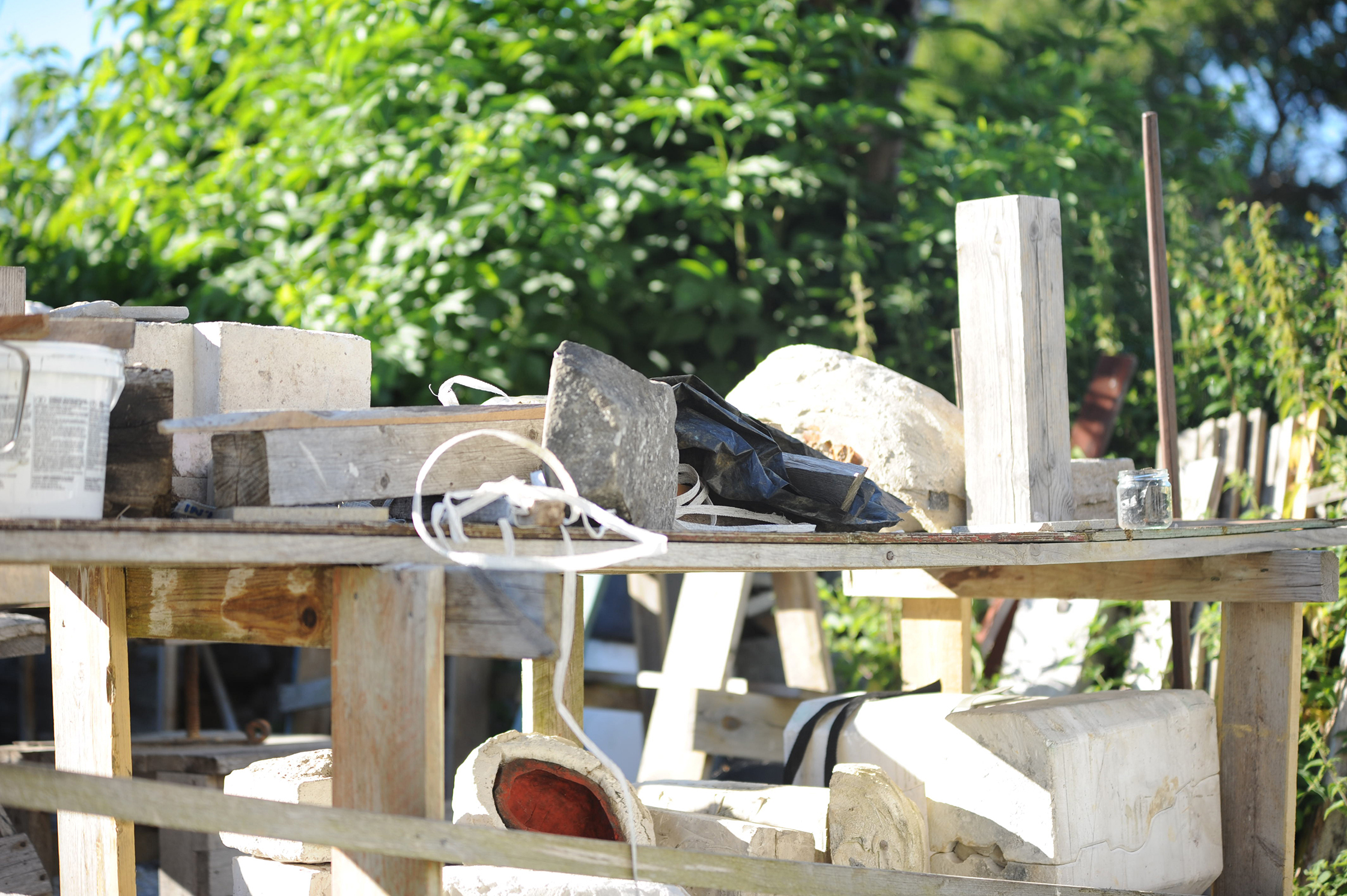









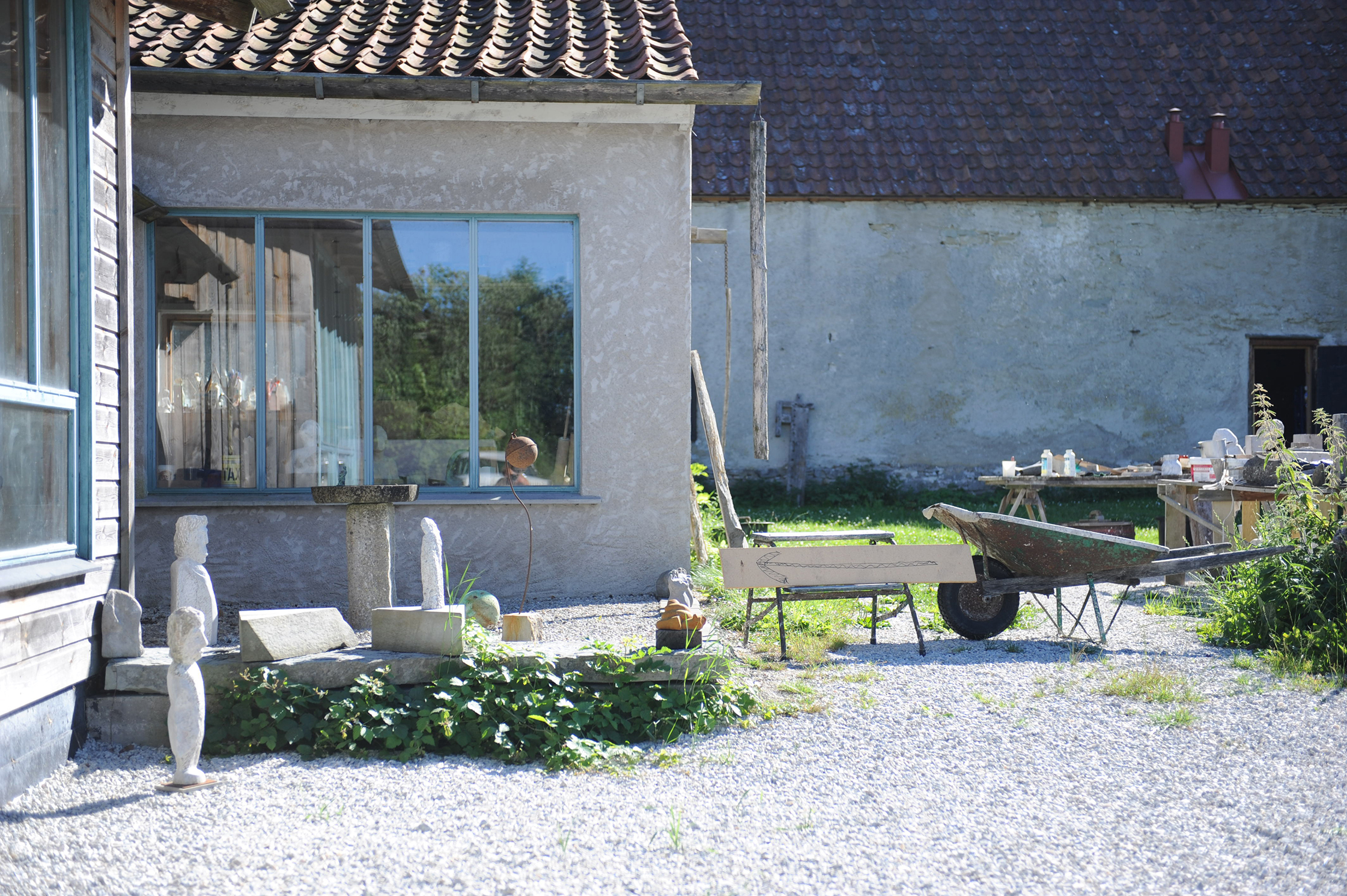




How long has the property been in the family. Can you tell us about it´s history?
It has been in the family since 1919, almost 100 years. My grandmother Signe and my grandfather Nils bought this small farm in 1919. Back then they had two or maybe three cows and some chickens for their own subsistence. My grandfather worked as a day laborer and farm-worker in the area. He had an accident with an iron rod through the chest in 1930 when he was 40 years old, very dramatic. There were no ambulances or even cars here back then, so he died in the house right next to us.
Then in 1945, my father’s brother – one of their sons – died. It was a accident with an explosion at Burgsvik’s hospital – that´s where I was born by the way. It was a great grief to my father, they were like twins with just a couple of years between them. My grandmother continued living here until 1969, she remained a widow. After my father married my mother from Sundre they stayed here for a few years before we moved to Visby in the early sixties.
How did it become what it is today?
When I came here as an adult I immediately decided that I should stay and live here for a while. This is where I wanted to integrate the art into my life with an open studio that people could come and visit. The renovation of the barn went surprisingly well so I thought that I could create a gallery as well. Now I invite other artists to make exhibitions together with me and so on. It is really fun. It is a beautiful environment to take care of. It is strange that my father and my grandparents could make a living out of this, the small farm without any significant land. At the same time I have found a way to make a living out of this limitation as well. Not as a farmer but as a sculptor, drafter and painter.
Tell us about your past. I understand you were quite good at the sport, handball.
I grew up in Visby after we left Burgsvik. We lived near the gymnasium and there wasn’t really anything to do in the winter so all my friends and I ended up there and started a handball team. We became really good and went up in the national top league, with a team based on friends. After that I also participated in some international tournaments.
How did you get into sculpting?
It all started when I worked at a preschool. When the kids and I were sculpting with clay it struck me that I wanted to explore it more. I asked my employer, which was the municipality at the time, if I could take a few courses and they agreed. Then I took a leave of absence from my day job and started to study full-time. After a while I simply quit the job and never went back. From then on I focused on art as much as I could.
To make money I started working with props as a decorative painter at the public-service television, the Royal Theatre and the Opera House. Thanks to that I had access to really good materials such as paint. That was the situation for me while I was studying, for about three or four years. After that I worked at an art school as a janitor for a few years before I moved back to Gotland in 1997. Before I ended up here I had a studio in Visby for a few years.
It is brave to quit a day-job and switch to art. Was it a tough decision or did it come naturally?
It came naturally, I was never afraid to fail. I had earned a great confidence and determination from my days with handball. I knew that I would have to make concerted efforts to be able to make a living out of it. It is the same as being physically fit or talented with a ball if you want to succeed in sports. I think the sports made me mentally strong as well. I have never been narcissistic or in it for success when it comes to art. I had all that in the years playing handball. I have never asked anyone if I could have an exhibition at their gallery either.
In some way it just turned out that everything came to me. Most of the time I tried to say yes to everything. I have always tried to be serious and professional with my work but never pretentious. The important thing in life is that whatever it is you do, it should make you feel good.
Is it important for you to be educated in art if you are an artist?
Studying art is paying for a studio where you can work for a period of time and where you can be devoted to your art. You can’t expect anyone to feed you with information on how you become a great artist. You, and only you are in charge of your own development. It is like any kind of practice. When trying to work with arts alongside a day-job it will always be somehow divided. That might sound a bit contradictory after I told you about my renovations. For the last few years I have been living, renovating, and creating at the same location. It has all turned into the same thing for me, it works really well.
Your art and your way of life feels deliberately down to earth, almost timeless. Is that something you do consciously or did it just turn out that way.
Existence is like rowing a rowboat. You always look backward but glance over your shoulder from time to time to see the future. It is hard to speculate about the future when you don´t really know anything about it. That’s why naturally you think and philosophize more about the present. The great majority of my art symbolizes the good old days, before we started to abuse our planet.
I cut the natural material of stone by hand when sculpting but of course I use electric tools as well. I don’t ride a horse and carriage, I have a car. With all the materials I deal with I try to provide some sort of respect and reverence. I try to avoid “designing” to much. I want the material to be involved and I want it to have it’s own expression in what is being created. It belongs to earth so I shouldn’t control it fully. In that way I might be what you call down to earth, even primitive in some ways.
Do you ever leave this place? Do you go to any special places for inspiration?
Each fall I travel since I moved out here. Over the past five years I have been to Italy, Spain, England, Scotland, Germany and Czech Republic to mention a few places. A couple of them several times. When I travel I draw, paint with aquarelles, make sketches and work with photography. One thing that I often do is to find a small jazz club where I can sit down and draw. When I am surrounded by the sound of music I can concentrate more on what I see and visualize it on paper. I draw really fast in these situations and focus intensely. It is a one-way thing, from what my eyes see to what my heart feels, to what my hand is doing.
Do you listen to music in your studio here in Burgsvik as well?
Never. I don´t like it. I usually listen to the news channel on the radio. I want to be focused when listening to music. I think music is incredibly important, it must be treated with great respect. At home I enjoy listening to my vinyl records.
Do you have any other interests outside of art and your property renovations?
Sports are also a hobby of mine. Nowadays I watch it on television as I don’t train anymore. My favorite soccer-team is Liverpool FC. Recently I really enjoyed the finals between Bayern Münich and Dortmund. I keep up with the matches through cable television. Internet access and cable television is necessary, otherwise you can’t live out here.
Can you tell us about Burgsvik for someone who has never been here?
Burgsvik is a village located furthest away from Visby, which is the biggest city within Gotland. Geographically it is on the Southern end so it is very important to preserve everything that’s here for the local residents. We have a gas station with video rentals and betting, supermarket, library, hardware-store, gym and a local pub. All that is open twelve months a year and it is very important to keep it that way. For a small place like this it is very good to have all that.
Do you have any other favorite places in Gotland?
Well, I adore some parts of the coastlines around the island, Östergarn and Ekstakusten for example, one of them is in the North and one in the West. Fårö of course and Visby where I grew up. Visby is incredibly beautiful. Not just the medieval ruins and the town-wall but it is also very special because of the different levels of the cliffs down to the harbor.
What is it like to live here during winter?
Days can go by without me seeing another person. I like it, things in life have been very intense so I think I have a need to be here all by myself. It has made me a wiser person I think. I’ve become more thoughtful and gained more insights in life and of myself. It allows me to reflect on what I’ve been through and what I want to do. I have become more confident thanks to that.
Where do you shop and make everyday purchases?
I shop both in Burgsvik and in Hemse which are the closest villages. Today I have been in the fish shop that also has a vegetable department. In autumn and spring I fish for myself. Most whitefish and salmon. It is a special moment to go out at sea when the ice is thin and it is really cold. The birds are freezing and I am freezing.
How do you get around in Burgsvik?
I take the bike or walk. I also have a Toyota Hilux, it is good to transport stuff with. Then I have a summer car, a Mercedes from 1965. It makes me nostalgic and it is really fun. It has a steering gear. My family and I traveled throughout Europe in it in the 90’s. We went down to Marseilles, to Berlin, Paris, Amsterdam, and I took an art class in Provence. I bought it in 1990. My daughter doesn’t want me to sell it, she takes it for a spin every time she visits.
Are there any cafes and restaurants you like around here?
There is a summer restaurant just beside my gallery. Then there is a local pub in the village of Burgsvik where you can get pizza. It used to be called Folkeryds but the new owners abandoned that name, too bad, it was a great name. Now they just call it Fiket. People around here are a bit upset about the name change. In winter they close at 02:00 P.M but in the summer they are open in the evening as well.
What is your favorite thing in your home?
I have a special spot in my heart for a sculpture in hidden in the corner at home. It is called The Couple. It shows the moment when two people meet each other. Before anything happens. I made it in the early 90’s.
Many thanks Sanny for opening the doors of your home, studio and gallery in Burgsvik. It is such a beautiful part of the world. To find out more about Sanny’s artistic work, visit his website here.
Photography: Magdalena Björnsdotter
Interview & Text: Henrik Svegsjö
